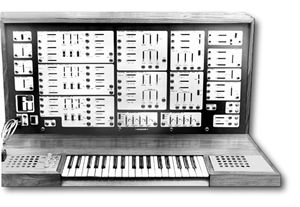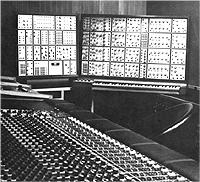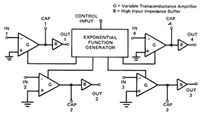Synthesizers
Overview

Analog Circuits E-mu Systems started out manufacturing analog synthesizers. After two shoebox prototypes in 1971, Dave Rossum joined up with Scott Wedge and built two desktop analog synthesizers in 1972. They looked remarkably like a cross between a Moog 12 and an ARP2600 - because that's what they were! The Eµ 25 pictured opposite, has 3 VCO's with four waveforms, 2 VCF's (LPF and HPF) and 2 VCA's with ADSR transient generaors.
Modular synthesizers Dave and Scott then spend the rest of the 1970's building and selling around 125 high cost, high quality, modular synthesizers. They also built a digital sequencer using TTL and then CMOS chips, and then in 1976 started to use 8-bit micro-processsors for sequencing and keyboard control.

E-mu Systems also provided consultancy expertise into the growing US based polyphonic analog synthesizer manufacturers of the 1970's (Oberheim in LA, and Sequential Circuits up the road in San Jose), both in terms of microprocessor controlled keyboards and analog synth chips that Dave Rossum designed with Ron Dow. These SSM chips cropped up in a number of classic early 1980 synths including the Korg Poly Six, the PPG 2.2 and of course the early Rev 1 and 2 Prophet Five's.
E-mu Systems did not attempt a polyphonic analog synthesizer until 1980. Then they designed and built a prototype computer controlled synthesizer called the Audity. This was the first synthesizer to utilise a disk drive (8" floppy), and it was perhaps the last large all analog project ever conceived. It was based on a complete voice card of SSM chips. It was E-mu's last and bravest attempt at an analog synthesizer, and since then Dave has been focused on digital electronics.

The True Legacy The true legacy of this era is in the analog synthesizer chip designs (made by SSM), rather than the Eµ 25, Modular or Audity. These new chip designs not only propelled polyphonic analog design, and got the Japanese replicating it and improving it, but also created a partnership between E-mu Systems and the silicon manufacturers that goes on today. During the 1980's E-mu Systems pioneered digital synthesizer chips (the E --> G Chips), and today they have an active partnership with a silicon design lab in the valley. This design expertise is one of the reasons E-mu Systems are still around today - they innovate with silicon.